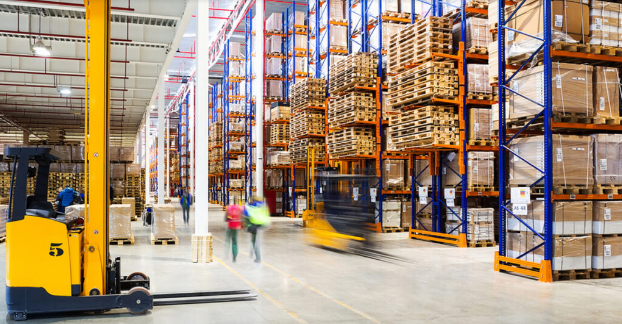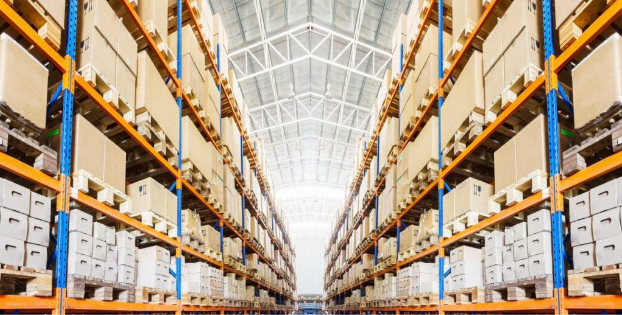Welcome to the Topic “The Massive Effect of E-commerce on Industrial Real Estate (Warehouse and Distribution centers)”
Industrial warehouses and distribution centers have evolved substantially due to the boom in e-commerce and the growing inventory needs of e-commerce powerhouses like Amazon.
Traditionally, warehouses and distribution centers were built-in storage chambers for giant store-front retail corporations.
However, today these facilities are far more complicated and varied in size due the evolving supply chain needs in the market and manufacturers needing to keep up with consumer demand.
With more pressure on companies to deliver products – and fast, industrial warehouses are showing up in many more cities and even in suburbs across the country.
Due to a scarcity of suitable locations and increasing demand, industrial property developers must be inventive with finding and/or building structures to meet the growing need.
Business owners may choose to re-outfit an existing property to customize their square footage and operation needs. Or they may choose to modify their development prototype design to account for even more expanded growth based on market trends.

Industrial Properties and the Effect of E-commerce
For over a decade, e-commerce has grown more than three times quicker than brick-and-mortar retail, accounting for nearly 14.3% of total retail sales in the United States, as of 2022. This massive expansion has put a significant strain on the national and international supply chain operations in the consumer market.
Due to the strain on the supply chain, demand for industrial real estate has risen to near-unprecedented levels, completely transforming modern retail warehouses.
The need for more effective logistics spaces that allow for faster delivery of goods to customers has forced developers into building new warehouses that are larger and taller than previously designed.
Building sizes increased the most in distribution areas that 1. serve big population centers and 2. have land for additional warehouses. Cities/regions such as Atlanta, the Inland Empire (adjacent coastal Southern California), and Cincinnati are examples of these areas.
Furthermore, rural and suburban areas lacking appropriate modern logistics facilities have additional expansion potential to keep up with increasing demand.
The rise of e-commerce has dominated the retail industry, but what impact does it have on industrial real estate? What stage of the development cycle are we in? What effect does this have on current leases and developments? How can new e-fulfillment needs alter building design and functionality?
To answer these issues, we looked at the industry’s growth, fulfillment strategies, and the current leasing patterns among e-commerce consumers. The following are some of the most important themes:
It’s still early days.
E-fulfillment seems to be a more prominent part of the logistics business for at least the last five years, while online purchasing stretches over two decades. However, supply networks are just beginning to modernize to keep up with the rapid expansion in volume.
E-commerce now accounts for over 20% of new industrial leasing, which is a big jump from the less than 5% it was at five years ago.
However, while e-commerce may seem to be at the pinnacle of its growth, it is still in its infancy compared to the longer standing history of online selling.

High usage intensity
E-commerce merchants need around 1.25 million square feet per every billion dollars in online sales; which is nearly three times the space required by traditional brick-and-mortar stores (Ingle). To put that square footage into context, 1.25 million sq. ft. is the equivalent of almost 22 football fields – or almost 29 acres of land. And with the e-commerce boom not slowing down any time soon, those numbers are likely to only increase in the near future.
This is due to online order fulfillment having four distinct business characteristics:
- A wide range of products,
- Higher levels of inventory
- More excellent outbound shipment space needed
- Higher reverse logistics (process returns).
A wide range of options
Varying e-commerce methods and ongoing sector evolution create a wide range of needs across new and older infill buildings, and there is no industry consensus on size or building features. Customer size, industry, geographical area, and operational building demands vary significantly across retail/e-commerce companies using industrial space.
Adaptability, versatility, mobility
Faster delivery times, transportation costs, and store size drive demand for locations next to or within large population centers. Not to mention, last-mile facility competition has been extremely fierce, forcing companies to increase geographical locations of their distribution centers to accommodate customer delivery location needs.
This puts emphasis on the utilization of easily-accessible properties in more populated areas versus the traditional model of choosing tax-advantaged remote sites.
Experimenting with several channels
E-fulfillment models are continually evolving. While brick-and-mortar businesses have rapidly increased their investments in “purchase online, pick up in-store” and “ship from store” offers, it’s unclear whether these initiatives will be effective and sustainable long-term due to critical challenges such as tracking inventory, unit economics, and workforce logistics sustainability have yet to be addressed.
One thing is sure: the ability to deliver to customers across many channels and at any time pushes merchants to ask more of their supply chain providers.

The Future of E-Commerce and Industrial real estate
Companies’ real estate footprints and development plans are still evolving, and it’s becoming evident that “one size fits all” will not be a viable approach to filing the market needs.
E-commerce real estate needs are anticipated to remain divided into four categories:
- Outside of major metropolitan areas, where shipment containers and larger pallets can be delivered via air or sea
- Mid-sized distribution and fulfillment hubs looking to be part of the “ring of speedier gratification.”
- Medium to big merchandise sorting centers springing up around major cities to speed up deliveries.
- Small depots in less-accessible communities, where the last mile begins.
Over the next three years, an estimated 290 million square feet of industrial real estate will be developed, with many buildings exceeding 100,000 square feet (Dyton).
According to CBRE, e-commerce is predicted to account for 26% of all retail sales in the United States by 2025, necessitating an extra 330 million square feet (Ingle) of distribution space to properly manage and account for the rise in online consumer sales.
And according to CBRE Econometric Advisors, the estimated e-commerce-driven demand for distribution space accounts for 27% of the overall market for industrial real estate in the United States through 2025 (Ingle) Warehouses for traditional retail distribution, manufacturing, R&D space and data centers all fall under the umbrella of industrial real estate.
Statista, a market research firm, estimates that while e-commerce sales were $431.6 billion in 2020, revenue will rise to over $500 billion by 2025, according to its models (Barber).
Here at Tenant Advisory Group, we help our clients get ahead of the curve and find the right space to fit their ever changing needs.
Our superior inventory, network, negotiations, and drive keep our clients in the front of the line in acquiring their ideal space, where others might fall behind and lose out.
Contact our team today to start looking for your next industrial property!
Have any questions regarding the topic “The Massive Effect of E-commerce on Industrial Real Estate “ feel free to comment below.
Also Read: How to Maximize Your Networking Success
Sources
Barber, R. (2022, March 18). Online shopping statistics, facts & trends in 2022. Cloudwards. Retrieved July 25, 2022, from https://www.cloudwards.net/online-shopping-statistics/
Berman, J. (2021, June 29). CBRE report points to e-commerce-driven need for another 330 million square-feet in U.S. by 2025. Logistics Management. Retrieved July 25, 2022, from https://www.logisticsmgmt.com/article/cbre_report_points_to_e_commerce_driven_need_for_another_330_million_square
Dyton, J. (2021, October 7). Analysis: Industrial space demand will continue upward through 2026. Connected Real Estate Magazine. Retrieved July 25, 2022, from http://connectedremag.com/real-estate-news/industrial/analysis-industrial-space-demand-will-continue-upward-through-2026/
Ingle, C. (2021, June 22). U.S. will need 330m sq.. ft. of additional distribution space by 2025 to meet robust e-commerce demand. CBRE. Retrieved July 25, 2022, from https://www.cbre.com/press-releases/cbre-us-will-need-330m-sq-ft-of-additional-distribution-space-by-2025-to-meet-e-commerce-demand#:~:text=With%20e%2Dcommerce%20penetration%20expected,a%20new%20report%20from%20CBRE.
TAGS